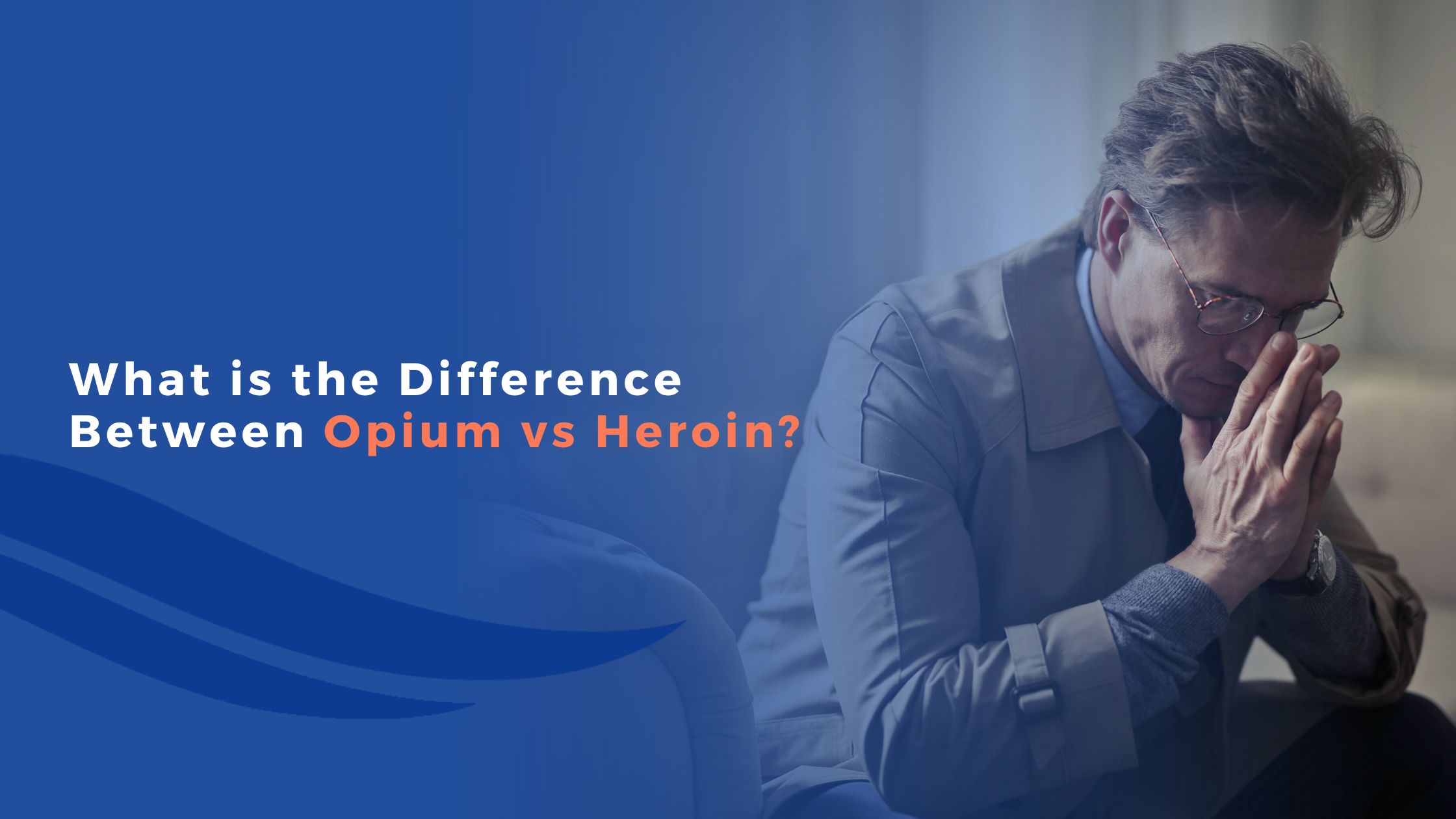Opium vs Heroin: What is the Difference?


Written By
DreamLife RecoveryWhen it comes to narcotics, two substances often come to the forefront of discussion: opium and heroin. Despite being frequently mentioned in the same breath, these drugs are not identical twins. So, what distinguishes them?
In this article, we will delve into their distinct histories, chemical compositions, effects on the body, and societal impacts. Our aim is to provide a clear understanding of these two powerful substances, thereby contributing to more informed and nuanced conversations about their respective roles in the global drug crisis. Join us as we unravel the complexities of opium vs heroin.
Understanding Opium: A Brief Overview
Opium is a naturally occurring substance derived from the poppy plant, specifically Papaver somniferum. It has been cultivated for its medicinal and psychoactive properties for thousands of years, dating back to the ancient civilizations of Mesopotamia around 3400 B.C.
The opium latex is extracted from the seed pods of the poppy plant, which contains several alkaloids, including morphine and codeine, both potent pain relievers. The name ‘opium’ itself originates from the Greek word ‘opos’, meaning juice, referring to the milky sap from which the drug is derived.
Use and Effects of Opium
Historically, opium was used for its therapeutic effects as a sedative and analgesic. However, it’s also infamously known for its addictive properties, which have led to widespread use over centuries. Its global trade triggered conflicts such as the Opium Wars in the 19th century between Britain and China.
The effects of opium are dual-edged. Medicinally, it’s unmatched for its ability to relieve severe pain. Recreationally, it provides a euphoric high. However, it also carries serious health risks, including respiratory depression, addiction, and even death in high doses.
Despite its dangers, opium continues to play a significant role in both the medical field and the illicit drug trade.
Understanding Heroin
Heroin is a powerful and illegal drug in the opioid class that’s derived from morphine, a substance taken from opium poppy plants. First synthesized in the late 19th century by the pharmaceutical company Bayer, it was initially marketed as a safer, non-addictive substitute for morphine. The reality, however, proved quite different.
Heroin is typically sold as a white or brownish powder or as a sticky black substance known as “black tar heroin.” It’s often mixed, or ‘cut’, with other substances such as sugar or powdered milk to increase profits. It can be injected, smoked, or snorted, making it a versatile drug for those seeking its potent effects.
Heroin Use and Its Effects
The use of heroin produces an intense feeling of euphoria, followed by a state of drowsiness and relaxation. However, these short-term effects are accompanied by dangerous health risks, including severe respiratory depression, coma, and potential death. Long-term use can lead to physical dependence and severe withdrawal symptoms.
Despite its illegal status and well-documented dangers, heroin continues to be a significant public health issue worldwide, contributing to the ongoing opioid crisis. Understanding the history and impact of heroin is crucial in addressing this widespread problem.
Key Differences Between Opium vs Heroin
When comparing opium vs heroin, it’s important to understand that while they are somewhat related, they differ significantly in their chemical properties, addiction potential, health effects, and legal status.
1.Chemical Properties: On the one hand, opium is a complex mixture derived directly from the poppy plant, containing numerous alkaloids, including morphine and codeine.
On the other hand, heroin is a semi-synthetic opioid made from morphine. It’s chemically altered to increase its potency, making it much stronger than opium.
2. Addiction Potential: Both opium and heroin have high addiction potential, but for different reasons. Opium, being less potent, often requires larger or more frequent doses to achieve the desired effect, leading to increased tolerance and dependence.
Heroin’s intense euphoric effect makes it highly addictive, even after a single use. Its withdrawal symptoms also tend to be more severe.
3. Health Effects: Both drugs can lead to severe health problems. Opium use can cause respiratory depression, constipation, and, in severe cases, coma or death. Long-term use can result in physical and psychological dependence.
Heroin, due to its potency, has a higher risk of overdose. It can cause collapsed veins, infection of the heart lining, abscesses, and other soft-tissue infections if injected. Long-term use can lead to liver and kidney disease, pulmonary complications, and mental disorders.
4. Legal Status: Globally, both opium and heroin are classified as illegal substances under most jurisdictions due to their high use potential. However, some components of opium (like morphine and codeine) are legal for medical use under controlled conditions.
Heroin, on the other hand, has no recognized medicinal use and is illegal in virtually all circumstances.
Understanding these key differences between opium and heroin can help inform prevention and treatment strategies for those struggling with substance use.


Societal Impact of Opium and Heroin
The societal impact of opium and heroin use is profound, affecting individuals, families, and communities in numerous ways.
Personal Consequences
On a personal level, opium and heroin use can lead to serious health issues, including addiction, overdose, and death. These substances can also cause significant mental health problems, ranging from depression and anxiety to severe cognitive impairment.
The pursuit of these drugs often takes precedence over personal responsibilities, leading to job loss, financial difficulties, and strained relationships.
Impact on Families
Families of those struggling with substance use often face emotional stress, financial strain, and the heartbreak of watching a loved one’s life unravel.
Children may experience neglect or abuse, and family structures can be irrevocably damaged.
Impact on the Community
At the community level, the prevalence of opium and heroin use can fuel crime, violence, and social instability. It places a heavy burden on healthcare and law enforcement resources, diverting them away from other needs.
Economically, it results in lost productivity and increased healthcare costs.
The stigma associated with substance use can further isolate users, making it more difficult for them to seek help. Overall, the societal impact of opium and heroin use underscores the need for effective prevention, treatment, and recovery programs.
Find Treatment for Opium and Heroin Addiction near Pittsburgh, PA
Overcoming opium or heroin addiction requires professional intervention. Treatments such as behavioral therapies and medication can effectively address these substance use disorders.
If you or your loved one is struggling with either opium or heroin addiction, don’t face this challenge alone. DreamLife Recovery is ready to help you embark on your journey towards a healthier future. To take the first step today, call (855) 384-5808 or fill out this contact form.







